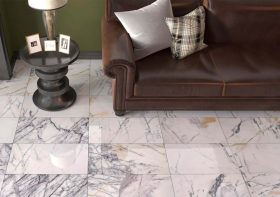Breaking the vase

One reason is that I no longer have a garden. According to the IBIS World Industry Report, 3/4ths of Australians have some type of garden. This depresses the demand for cut flowers in Australia. Without a garden, I am spending more time indoors but still want the joy of living flowers. Yet, that joy does not extend to the purchasing of flower vases.
With concerns about sustainability, one wonders what the values are associated with keeping flowers in a vase. Of course, flowers can be sourced sustainably.
Flower vases do help overcome the particular limitation of habitat. Flower arrangement in vases has often been driven by the lack of space to grow flowers in gardens or courtyards or the lack of access to fields. As Ming Dynasty Chinese scholar Yuan Hongdao states in his 1599 C.E. treatise, “A History of a Vase“:
Even in this respect, my official residences have proven small and mean, and ,I have constantly been transferred hither and thither, so I have had no alternative but to have recourse to gall-bladder shaped vases and cut flowers, changing their arrangements in accordance with the alternation of the seasons.
With today’s rapid urbanization, there may be a greater call for flower vases to help overcome this limitation of habitat.
An eternal bouquet for the dead, limestone relief from Egypt, 4th century B.C.E. Trish Mayo/Brooklyn Museum
The earliest instances of arranging flowers in vases are associated with religious practices. Traced back as far as 2,500 B.C.E., the ancient Egyptians offered lotus flowers in vases to the Goddess Isis. Ikebana, the Japanese art of flower arranging, began in the 10th Century C.E. as an essential aspect of Buddhist temple offerings to the dead. The sacred design motifs on early flower vases reinforce this connection between the vases, the flowers, and the spiritual worlds. Thus, at least the original intent of flower arrangement in vases was to overcome the limitations of mortality.
Yet, as the luxury of flower vases trickled down over the centuries from the religious elite temples to secular Australian middle-class apartments, the vase reflects beliefs of conspicuous consumption rather than spiritual piety. So today, flower vases do not help us overcome the limitations of mortality.
Thus, the vase receives 1.5 out of three checks for helping us overcome the Triad of Limitations. There is some social value, but it is more related to its original function in religious ceremonies. Its value can be enhanced as measured against the Triad of Well-Being.
Flower Vases and the Triad of Well-Being
The Triad of Well-Being emerged out of my critique of the negativity of the Triad of Limitations as a model focused on human fears. It evaluates how belonging, recognition, and self-determination all contribute to our sense of subjective well-being. How does the flower vase measure?
Belonging relates to the sense of security and affinity one feels with other people. Here, one must separate the giving of flowers as an activity that reaffirms belonging and the use of the flower vase as the receptacle of the gift. The sophistication of the symbolic language of flowers attests to how they have been used for centuries to affirm the feelings of belonging between people (e.g., the red rose meaning love, the violet representing faithfulness, etc.)
Flower vases are also given to people, often as housewarming or wedding gifts. Yet, the flower vase, without flowers, falls into the category of tasteful but somewhat impersonal gifts that are gendered toward women. This impersonality means that the vase itself does not contribute to a sense of belonging.
The status display of collecting and exhibiting expensive vases contributes to the sense of recognition. The person who decorates their home with an Alvar Aalto’s Savoy Vase or collects antique Ming Dynasty vases seeks an acknowledgment of their high social and economic status from peers. There is a great satisfaction to be found in flower vases in this manner.
The flower vase contributes little to self-determination. The Collins English Dictionary defines self-determination as:
The power or ability to decide for oneself without influence from outside.
If a person has self-determination, they can decorate a vase such that it expresses their individual or group identities and stories. Yet, the flower vase does not give or enhance that power or ability in and of itself.
Thus, the flower vase receives one out of three checks for the Triad of Well-Being. What is its overall social value?
The social value of the flower vase
Social value scorecard for the flower vase. Elizabeth Tunstall
According to the social value scorecard, the flower vase fails as an object that provides social value. NOTE: The benchmark is that a product must contribute to at least four of the six social value criteria (both positive and negative). So, should we stop designing flower vases? It is something to be seriously considered to reduce over-consumption.
Those who have vases may continue to use them. Those who do not have vases may purchase the ones that are sitting in inventory. If IKEA has over 50 styles of vases, many vases are sitting in inventory.
But we can also explore the other traditions of flower arrangement that do not rely on creating an additional product category. The tradition of flower garlands and wreaths is longer than that of putting flowers in vases.
Our challenge is to think about how we might begin to alter our consumption patterns for objects that provide limited social value. The design and purchase of flower vases is one habit we might try to break.




Leave a Reply